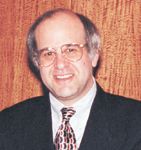- Acne
- Actinic Keratosis
- Aesthetics
- Alopecia
- Atopic Dermatitis
- Buy-and-Bill
- COVID-19
- Case-Based Roundtable
- Chronic Hand Eczema
- Chronic Spontaneous Urticaria
- Drug Watch
- Eczema
- General Dermatology
- Hidradenitis Suppurativa
- Melasma
- NP and PA
- Pediatric Dermatology
- Pigmentary Disorders
- Practice Management
- Precision Medicine and Biologics
- Prurigo Nodularis
- Psoriasis
- Psoriatic Arthritis
- Rare Disease
- Rosacea
- Skin Cancer
- Vitiligo
- Wound Care
Article
"Where could I ever find better company?"
It is estimated that less than 4 percent of the total number of dermatologists in the United States are following a purely academic career. Suffice to say that most academic dermatologists remain in the Franciscan branch of the family; if not truly a vow of poverty, then certainly a career-long differential from the income of our colleagues in private practice exists.

The decision of making one's career in a full time academic department of dermatology is multifactorial.
Upsides Working day-in and day-out with residents is an incredible honor and pleasure. The act of joining a faculty team as an instructor or an assistant professor and being mentored by senior colleagues and role models is no small joy either. The lifelong relationships with your faculty colleagues can be incredibly meaningful. The challenging patients that you are asked to consult upon and the opportunities to be the first to study new therapies and procedures have been golden opportunities that I cherish. But, for this editorial let's talk about residents and fellows in dermatology.
The residents make an academic career so much fun. How? In the past two weeks I have had residents walk through my door and tell me about a self-initiated residency project to see if a bioengineered skin possesses specific antimicrobial properties. I use these skins on epidermolysis bullosa and other difficult wound healing problems in pediatric dermatology and I would like to know that answer, too. Another resident visited and showed me a PowerPoint presentation based on a potential role for acupuncture in contemporary western dermatology. Current fellows and future residents have, during this same time, been working tirelessly to get a protocol for a biologic treatment approved for a pediatric psoriatic population we serve and another taught the department from her fascinating research on sun safety practices among different races and ethnic groups. All of these talks and possible projects occurred in the last two weeks.
Every two weeks I join our 22 residents for an evening of sushi and a lecture on pediatric dermatology based on the Third Edition of Pediatric Dermatology, Schachner and Hansen, et al. But I do not give the lecture, I receive it, as each of our residents have self-assigned sections of the book to review, condense and put into a 45 minute teaching module for the rest of us, me included ... and it's my book.
Residents rock! As a full-time faculty member I get the incredible experience of watching their fund of knowledge expand from day one to the last day of their residency. If my colleagues and I have done our job well, then their fund of knowledge will never stop expanding since they will remain students of dermatology until they hang it up. The whole process remains a thrill for me, and I hope it always does.
Great science Our residency program requires resident research. The resident faculty partnerships that result in great science also provide a lifelong special understanding of the research process and underscore the need to support academic dermatology for the rest of one's career. My editorial point to all my readers, residents, fellows, faculties and friends of dermatology is that it is our role and covenant as dermatologists to continue to support academic training programs.
There has been a concept brought forth by the American Academy of Dermatology in which pharmaceutical companies will support a certain number of residency slots. I am not comfortable with this program. One could construe it as a positive feedback system, where corporate profits will help generate more prescribers to generate more corporate profits. Certainly those colleagues involved with this program have excellent intentions. But, I find myself haunted by the potential future headline that speaks of my italicized analysis. I would prefer we tithe ourselves if we need more support for resident positions.
Newsletter
Like what you’re reading? Subscribe to Dermatology Times for weekly updates on therapies, innovations, and real-world practice tips.











